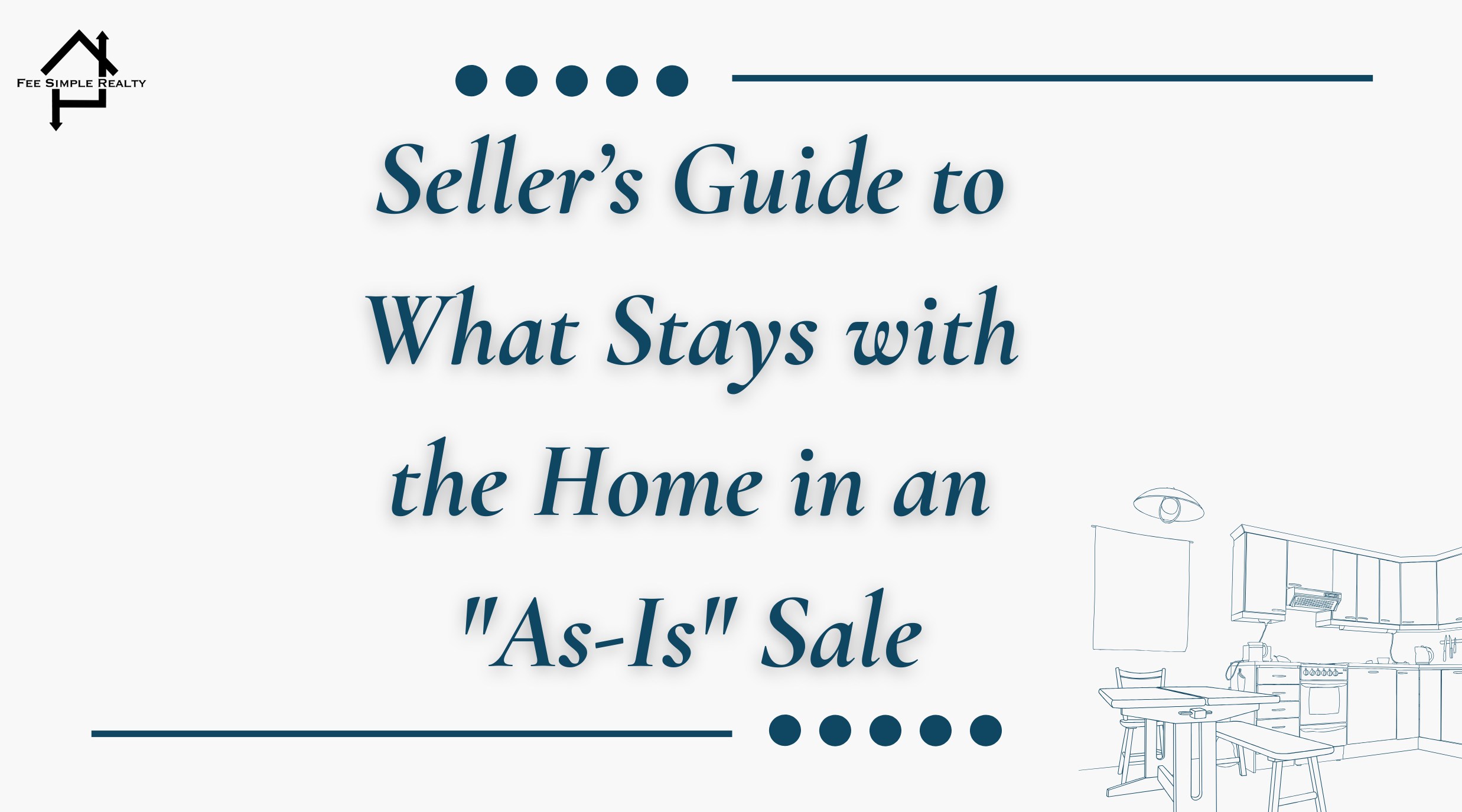What Stays With The Home In An As-Is Sale
Selling your home “as-is” means you’re offering it in its current condition—repairs, flaws, and all. But does that mean everything in the house stays? Not necessarily. Understanding what is included in an as-is sale helps sellers avoid disputes, legal headaches, and last-minute renegotiations. This guide will break down what typically stays with the home, what sellers can take, and how to make everything clear in the contract.
Overview: What Stays and What Goes in an “As-Is” Sale
Key Points:
- What “As-Is” Really Means for Sellers
- Items That Typically Stay with the Home
- What You Can Take with You
- Gray Areas That Need Clarification
- How to Avoid Disputes with Buyers
Detailed Breakdown: Selling an “As-Is” Home the Right Way
1. What “As-Is” Really Means for Sellers
An “as-is” sale tells buyers that the home is being sold without repairs or improvements. However, this does not mean the seller can remove built-in items or fixtures at will. Many states have real estate laws that dictate what must stay with the property, regardless of whether it’s sold as-is.
Example or Tip: The contract should specify if the buyer is accepting fixtures and appliances as part of the sale. If you plan to take something, disclose it upfront to avoid confusion.
2. Items That Typically Stay with the Home
Anything attached to the home is generally expected to stay.
In-Depth Analysis:
Real estate contracts typically require fixtures to remain with the property. A fixture is something permanently attached to the home, meaning it cannot be removed without damage or modification.
Common Items That Stay in an “As-Is” Sale:
- Built-in appliances (stoves, dishwashers)
- Light fixtures and ceiling fans
- Cabinetry (kitchen and bathroom)
- Window treatments (rods and blinds, unless specifically excluded)
- Attached shelving and storage units
- Garage door openers
- Irrigation systems
- Mailboxes and house numbers
Example or Tip: If a buyer expects something to stay and it’s missing on move-out day, they may demand replacements or compensation. Make sure everything is clear in writing.
3. What You Can Take with You
If it’s not permanently attached, you can usually take it—but communication is key.
In-Depth Analysis:
Sellers can generally remove personal property and items that are not affixed to the home. However, if an item looks like it belongs with the house, the buyer may assume it stays.
Things You Can Take in an “As-Is” Sale:
- Freestanding refrigerators, washers, and dryers (unless agreed to stay)
- Furniture and decor
- Outdoor potted plants and patio furniture
- Personal items like artwork and mirrors (unless bolted to the wall)
Example or Tip: If you want to take something that looks built-in—such as a chandelier or a mounted TV—it’s best to exclude it in the contract to prevent misunderstandings.
4. Gray Areas That Need Clarification
Some items fall in between “attached” and “removable”—so make sure your contract specifies what stays and what goes.
In-Depth Analysis:
Some features are semi-permanent and could be argued either way in a dispute. If there’s any doubt, address it upfront with your real estate agent and in the contract.
⚠ Common “Gray Area” Items:
- Mounted TVs and sound systems – The TV itself is usually removable, but the wall mount is considered a fixture.
- Smart home devices – Thermostats, security cameras, and doorbells may need clarification.
- Above-ground pools and hot tubs – Some buyers assume they stay, while sellers may plan to take them.
- Outdoor sheds – If not permanently anchored, they might be considered personal property.
Example or Tip: If you’re unsure whether something stays, ask your agent or include a specific clause in the contract.
5. How to Avoid Disputes with Buyers
A clear contract prevents last-minute conflicts over what stays.
In-Depth Analysis:
Buyers might assume everything they see during showings stays unless told otherwise. Sellers should be upfront about exclusions before accepting an offer to avoid headaches later.
How to Avoid Problems:
- Disclose in writing what you plan to take before accepting an offer.
- Remove desired items (like a chandelier) before showings to prevent confusion.
- Use a detailed contract that clearly lists exclusions.
- Clarify appliances in the contract—if they’re staying or not.
Example or Tip: If you love a specific chandelier, replace it with a different one before showings so buyers don’t assume it’s part of the deal.
Conclusion
An “as-is” sale means no repairs, but it doesn’t mean everything in the home is up for grabs. Anything permanently attached usually stays, while personal belongings go with the seller. The best way to avoid disputes is to be upfront and make sure everything is clearly listed in the contract.
Selling soon? Work with an agent who understands the details of as-is sales so you can protect your interests and avoid last-minute surprises.
Contact us today or visit our Instagram | Facebook .
